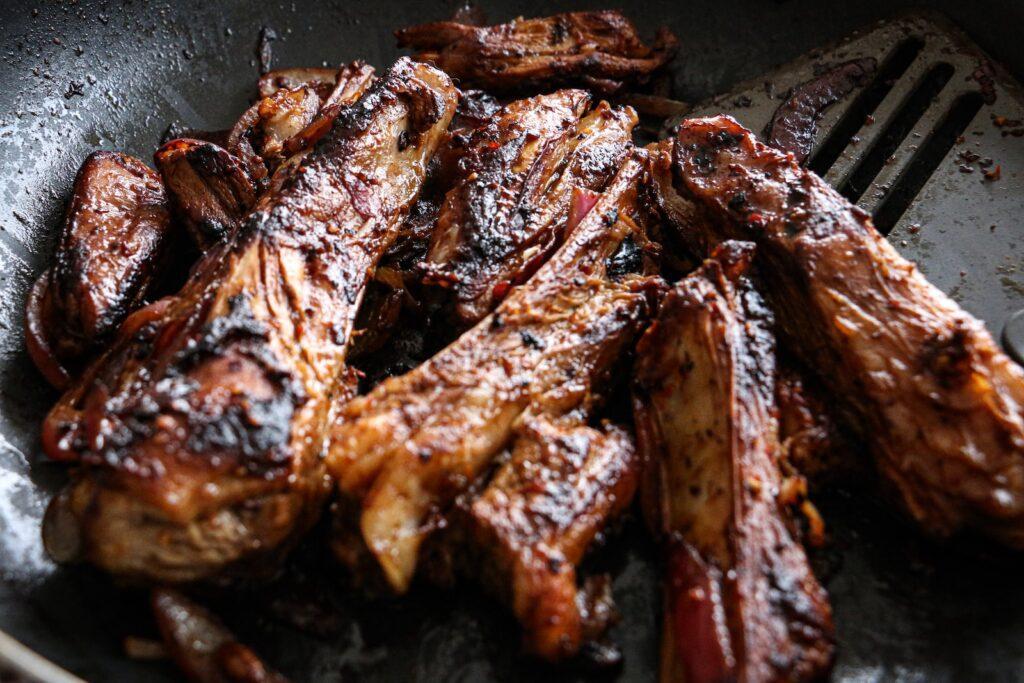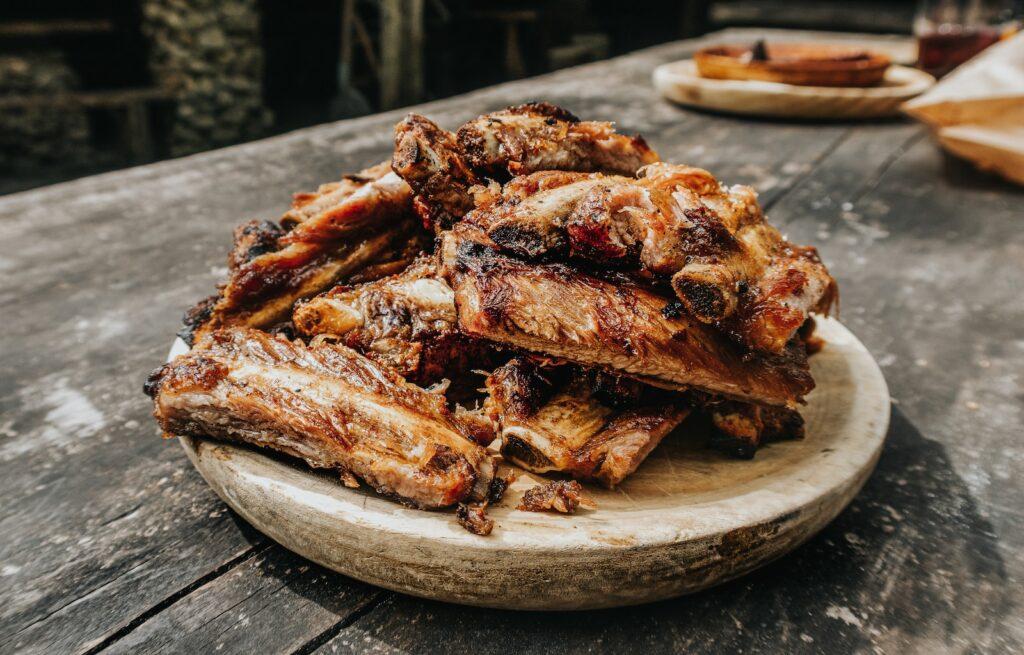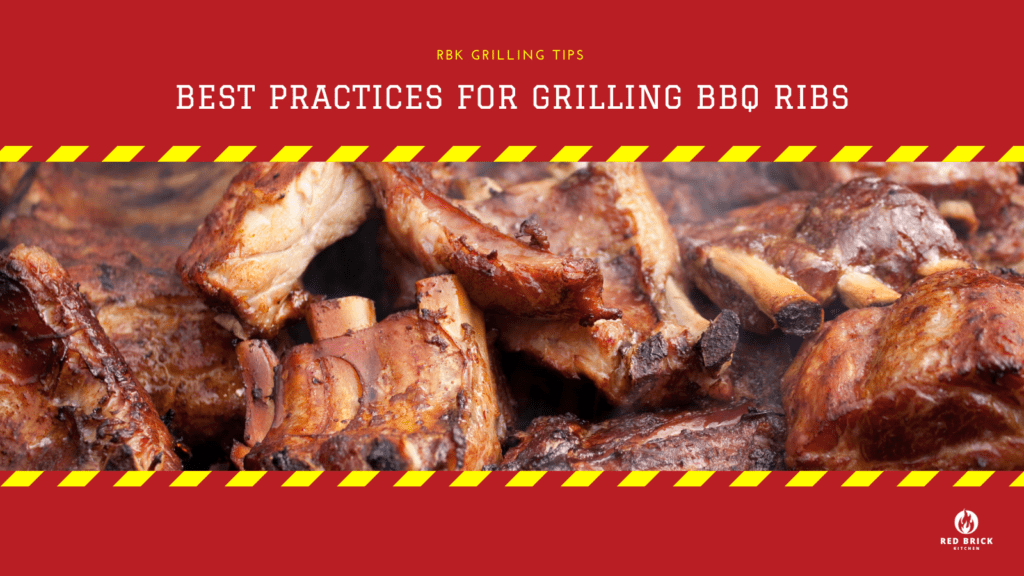When it comes to barbecue, one of the most beloved dishes is BBQ ribs. Known for their tender, juicy meat and smoky flavor, ribs are a favorite at backyard cookouts and BBQ joints alike. In this article, we will explore everything you need to know about cooking BBQ ribs on a grill.
What are Ribs
Ribs refer to the meat that comes from the rib cage of an animal, typically pork or beef. They are a popular cut of meat due to their rich flavor and the fact that they can be cooked in various ways, including grilling, smoking, and baking. Ribs are typically categorized into two main types: baby back ribs and spare ribs.
Types of Ribs
- Baby Back Ribs: These ribs come from the top of the ribcage, near the backbone, and are smaller and more tender than spare ribs. They are called “baby” back ribs because they are shorter in relation to larger pork ribs.
- Spare Ribs: Also known as side ribs, spare ribs come from the bottom of the ribcage, closer to the belly. They have more meat, fat, and connective tissue compared to baby back ribs.
Preparing Your Grill for Ribs
Before you start grilling your ribs, it’s important to prepare your grill properly to ensure even cooking and delicious results.
What Grills are Best for Ribs
There are several types of grills that can be used to cook BBQ ribs, including charcoal grills, gas grills, and pellet grills. Each type has its own pros and cons, so choose the one that best fits your preferences and cooking style.
What to Look For When Buying Grills
When buying a grill for cooking ribs, consider factors such as grill size, temperature control, and durability. Look for grills that have a temperature gauge, adjustable grates, and good heat retention.
What to Look For When Purchasing Ribs
Choosing the right ribs is crucial to achieve succulent, flavorful results. Here are some things to consider when purchasing ribs.
Different Cuts of Ribs
- Baby Back Ribs: As mentioned earlier, baby back ribs are smaller and leaner compared to spare ribs. They are ideal for those who prefer tender meat with less fat.
- Spare Ribs: Spare ribs have more fat and connective tissue, which results in a richer and juicier flavor. They require longer cooking times and are perfect for those who enjoy a meatier rib.
Preparing Ribs for Grilling
Before grilling, it’s important to remove the membrane from the back of the ribs. This will allow the flavors to penetrate the meat more effectively. Additionally, you can choose to marinate or dry rub the ribs to enhance their flavor. Marinating involves soaking the ribs in a mixture of spices, liquids, and acids, while dry rubbing involves coating the ribs with a blend of dry spices and herbs.
Now that we’ve covered the basics of ribs and how to prepare your grill and ribs for grilling, it’s time to dive into the next sections and explore the temperature considerations, cooking times, and tips and tricks for achieving perfectly grilled BBQ ribs.

Temperature Considerations for Grilling Ribs
When it comes to grilling ribs, maintaining the right temperature is crucial to achieving tender and flavorful meat. Here are some temperature considerations to keep in mind:
The Perfect Temperature for Grilling Ribs
The ideal temperature for grilling ribs is around 225°F to 250°F (107°C to 121°C). This low and slow cooking method allows the connective tissues in the meat to break down slowly, resulting in tender and juicy ribs.
It’s important to avoid cooking the ribs at high temperatures as the meat can become tough and dry. Low and slow cooking is the key to achieving deliciously tender ribs.
How to Set Temperatures for Ribs
Setting the temperature for grilling ribs depends on the type of grill you are using:
- If you’re using a charcoal grill, you can achieve the desired temperature by lighting a small amount of charcoal and arranging them around the edges of the grill. This creates an indirect cooking zone where the ribs can be placed away from direct heat. Adjust the vents to control the airflow, helping to regulate the temperature.
- For gas grills, preheat the grill with all burners on high for about 10-15 minutes. Once preheated, turn off one or more burners to create an indirect heat zone. Place the ribs on the cooler part of the grill and adjust the remaining burners to maintain the desired temperature.
Using a grill thermometer is highly recommended to ensure accurate temperature control. Place the thermometer on the grill grate near the ribs to monitor the cooking temperature throughout the grilling process.
Cooking Times for Ribs
The cooking times for ribs can vary depending on the size of the ribs and the cooking temperature. However, as a general guideline, here’s what you need to know:
What Time Should You Start Grilling Ribs
It’s best to plan ahead and start grilling ribs well in advance, as they require a long cooking time. For tender fall-off-the-bone ribs, allow at least 4-5 hours for cooking.
If you’re planning to serve the ribs for dinner, start grilling them in the early afternoon to give yourself plenty of time. This will ensure that the ribs are perfectly cooked and ready to be enjoyed without any rush.
How Long Do You Cook Ribs on the Grill
The cooking time for ribs on the grill can vary depending on factors such as the size and thickness of the ribs, as well as the cooking temperature. As a general guideline, baby back ribs typically take around 2-3 hours, while spare ribs may require 3-4 hours.
It’s important to note that these are just approximate cooking times. The best way to determine if the ribs are done is by using a meat thermometer.
How to Tell When Ribs are Ready To Be Taken Off the Grill
Knowing when your ribs are ready to be taken off the grill is crucial to achieving perfectly cooked meat. Here are two reliable methods to determine if your ribs are done:
- Checking the Color of the Ribs: One visual indicator of doneness is the color of the ribs. Cooked ribs will have a beautiful caramelized crust, also known as the “bark,” which develops due to the Maillard reaction. The meat should also pull back from the bones slightly.
- Using a Meat Thermometer: The most accurate way to determine if your ribs are cooked to perfection is by using a meat thermometer. Insert the thermometer probe into the thickest part of the meat, without touching the bone.
- For baby back ribs, the internal temperature should reach around 190°F to 203°F (88°C to 95°C). Spare ribs, on the other hand, should reach slightly higher temperatures, around 200°F to 205°F (93°C to 96°C).
Once the desired internal temperature is reached, remove the ribs from the grill and let them rest for about 10-15 minutes. This resting period allows the juices to redistribute throughout the meat, resulting in tender and flavorful ribs.

Tips and Tricks for Cooking Ribs on the Grill
One of the keys to cooking perfect BBQ ribs on the grill is to use various tips and tricks that can enhance the flavors and textures of the meat. Here are a few techniques you can try to elevate your rib-grilling game:
- Brining: Brining your ribs before grilling can help to tenderize the meat and infuse it with flavor. To create a brine, combine water, salt, sugar, and various spices in a large bowl or resealable bag. Submerge the ribs in the brine and let them sit in the refrigerator for at least 2 hours or overnight. The result will be juicy and flavorful ribs that are sure to impress your guests.
- Basting: Basting your ribs with a tasty sauce or glaze throughout the cooking process can add extra layers of flavor and moisture. Create your own basting sauce using a combination of your favorite BBQ sauce, honey, apple cider vinegar, and spices. Brush the sauce onto the ribs every 15-20 minutes as they cook on the grill. This will create a delicious and caramelized glaze that will enhance the overall taste of the ribs.
How to Serve Ribs
After all the hard work and anticipation, it’s time to serve your perfectly grilled BBQ ribs. Here are a few tips on how to make the most of your rib-serving experience:
- Complementary Side Dishes: When it comes to serving ribs, you can’t go wrong with classic BBQ side dishes. Consider serving your ribs with coleslaw, baked beans, cornbread, or grilled vegetables. These sides complement the smoky flavors of the ribs and add some variety to your plate. Don’t forget to have extra napkins on hand as well!
- Sauces: While the ribs themselves are already packed with flavor, serving them with a variety of sauces can take them to the next level. Offer a selection of BBQ sauces, including spicy, tangy, and sweet options, so that your guests can choose their favorite. Additionally, providing some homemade dipping sauces, such as a tangy mustard-based sauce or a creamy garlic aioli, can add an extra layer of deliciousness.
Conclusion
By following the tips and techniques outlined in this article, you can become a master at grilling BBQ ribs. Remember to choose the right grill, purchase quality ribs, and pay attention to temperature and cooking times to ensure tender and juicy ribs every time. Don’t be afraid to experiment with different flavors and sauces to add your own personal touch to this classic dish.
Becoming proficient in grilling ribs may take some practice, so don’t be discouraged if your first attempt isn’t perfect. With time and experience, you’ll develop your own techniques and preferences that will result in mouthwatering BBQ ribs that will impress your family and friends.
Resources
To further enhance your BBQ rib-grilling skills, here are some recommended products, cookbooks, and online resources:
Recommended Products
- High-quality grill: Look for grills with adjustable temperature settings and ample cooking surface area for ribs.
- Rib rack: A rib rack helps to keep the ribs upright and evenly cooked during grilling.
- Meat thermometer: Invest in a reliable thermometer to ensure that your ribs are cooked to the perfect temperature.
Cookbooks and Online Resources
- “The Barbecue! Bible” by Steven Raichlen: This comprehensive cookbook offers a wealth of information and recipes for grilling all types of meats, including ribs.
- YouTube: There are many YouTube channels dedicated to BBQ cooking that provide step-by-step instructions and helpful tips for grilling ribs on a grill.
- Online forums and communities: Engage with fellow BBQ enthusiasts and grill masters to share tips, techniques, and recipes for cooking mouthwatering BBQ ribs.
With the right tools, knowledge, and passion, you can become a pro at grilling BBQ ribs and create memorable meals for your loved ones to enjoy. So fire up that grill, get your ribs ready, and let the aroma of smoky goodness fill the air!
FAQs
Can I substitute other types of ribs for BBQ ribs?
Yes, you can substitute other types of ribs for BBQ ribs. Some popular alternatives include baby back ribs, spare ribs, and St. Louis style ribs. However, the cooking times and techniques may vary slightly depending on the type of ribs you choose.
Can I cook ribs on a gas grill?
Yes, you can cook ribs on a gas grill. Gas grills provide consistent heat and are easy to control, making them a popular choice for cooking ribs. Just make sure to properly prepare your gas grill and adjust the temperature settings as needed during the cooking process.
How long does it take to grill ribs?
The cooking time for ribs on a grill can vary depending on factors such as the thickness of the ribs, grill temperature, and desired level of doneness. Generally, it takes about 2-3 hours to grill ribs, but it’s best to use a meat thermometer to ensure they reach an internal temperature of 180-190°F for tender and juicy results.
How do I know when the ribs are done?
There are a few ways to determine if ribs are done cooking. One method is to check the internal temperature using a meat thermometer. Ribs are typically done when the temperature reaches around 180-190°F. Additionally, you can visually check for the meat pulling away from the bone or use the “bend test” where the ribs should bend easily without breaking.
Should I baste my ribs while grilling?
Basting ribs while grilling can enhance their flavor and moisture. You can use a variety of basting sauces, such as BBQ sauce or a marinade, to brush onto the ribs during the cooking process. Just be mindful of the sugar content in the sauce, as it can burn if applied too early or cooked at high heat.
What are some popular side dishes to serve with BBQ ribs?
Some popular side dishes to serve with BBQ ribs include coleslaw, cornbread, baked beans, macaroni and cheese, potato salad, grilled vegetables, and fresh salads. These complementary side dishes can enhance the flavors of the ribs and create a well-balanced meal.
Can I make BBQ ribs without a grill?
Yes, you can make BBQ ribs without a grill. If you don’t have access to a grill, you can bake the ribs in the oven or use a smoker. The cooking times and techniques may differ compared to grilling, but you can still achieve delicious and tender BBQ ribs using alternative cooking methods.
What are some popular BBQ rib sauces?
Some popular BBQ rib sauces include Kansas City-style, Memphis-style, Carolina-style, and Texas-style sauces. These sauces vary in flavor and ingredients, offering different taste profiles. You can find pre-made sauces at grocery stores or try making your own homemade sauce for a personalized touch to your BBQ ribs.
Are there any vegetarian or vegan alternatives for BBQ ribs?
Yes, there are vegetarian and vegan alternatives for BBQ ribs. Some popular alternatives include seitan ribs, tofu ribs, or jackfruit ribs. These alternatives often replicate the texture and flavor of traditional ribs while using plant-based ingredients. You can find recipes and pre-made options for vegetarian or vegan BBQ ribs to accommodate different dietary preferences.
Last updated: September 25, 2023


